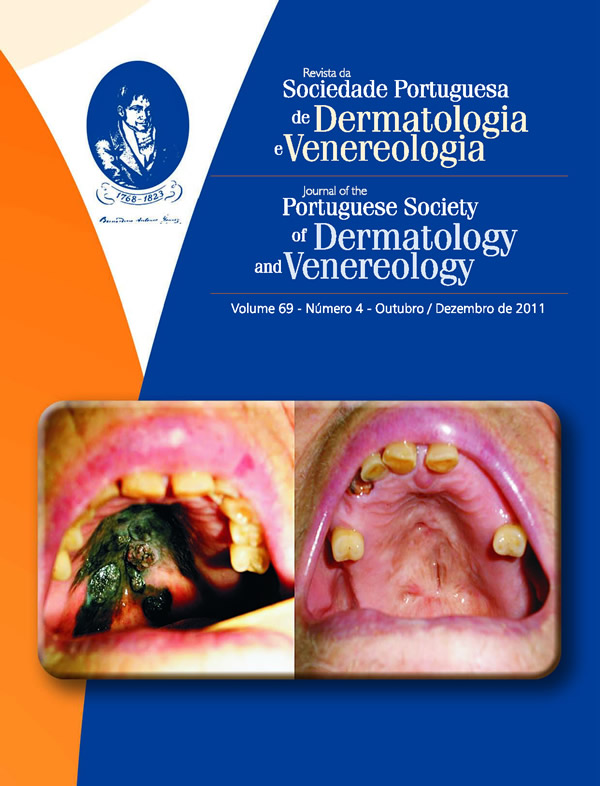DIAGNOSIS AND TREATMENT OF LATENT TUBERCULOSIS IN PSORIASIS PATIENTS SUBMITTED TO ANTI-TNF THERAPY – A RETROSPECTIVE STUDY IN DISTRICT HOSPITAL OF SANTARÉM (PORTUGAL)
Abstract
Introduction: TNF-α plays an important role in immune defense against Mycobacterium tuberculosis and, as such, the risk of reactivation of latent tuberculosis increases with the TNF-blocking agents.
Aims: To determine the prevalence of latent tuberculosis in psoriasis patients undergoing TNF-blocking agents, between 2006 and 2009. Assess the established therapy and their complications.
Materials and methods: Review of clinical records and registration of clinical and epidemiological data. The used screening tests were Tuberculin Skin Test, chest x-ray and, in the QuantiFERON®-TB Gold test.
Results: Forty-five patients were included in this retrospective study; twenty-seven (60%) had arthritic psoriasis and 18(40%) plaque psoriasis. Only 11% had known epidemiological risk factor for tuberculosis. Tuberculin skin test and chest x-ray were executed in all cases and QuantiFERON®-TB Gold test in four. Latent tuberculosis was confirmed in 18(40%) patients, 16(89%) man and two (11%) women. All of them were treated with isoniazid for nine months. Transient elevation of liver transaminases (mild hepatotoxicity) occurred in four (22%), however no patient developed moderate to severe hepatotoxicity. The entire completed the isoniazid regimen. The average period between the initia- tion of isoniazid therapy and TNF-blocking agent was two months. Mostly (46.7%) received adalimumab. No patients developed active tuberculosis.
Conclusion: Latent tuberculosis was diagnosed in 40% of psoriasis patients. All patients completed the isoniazid regimen therapy without relevant complications. No case of active tuberculosis was diagnosed.
KEYWORDS – Tumor Necrosis Factor-alpha; Psoriasis; Latent Tuberculosis; Biological Therapy.
Downloads
All articles in this journal are Open Access under the Creative Commons Attribution-NonCommercial 4.0 International License (CC BY-NC 4.0).








